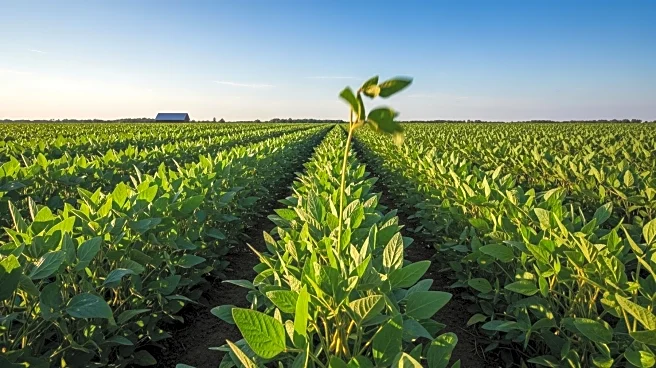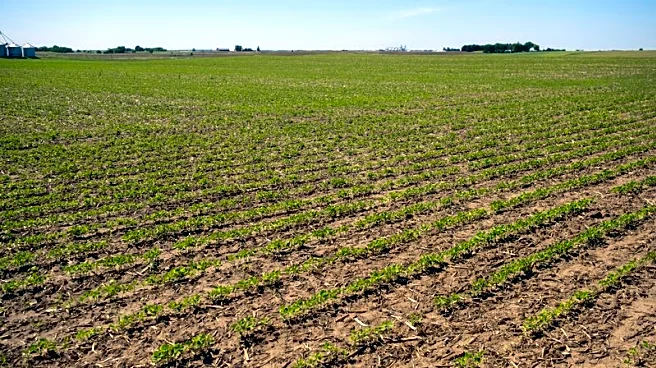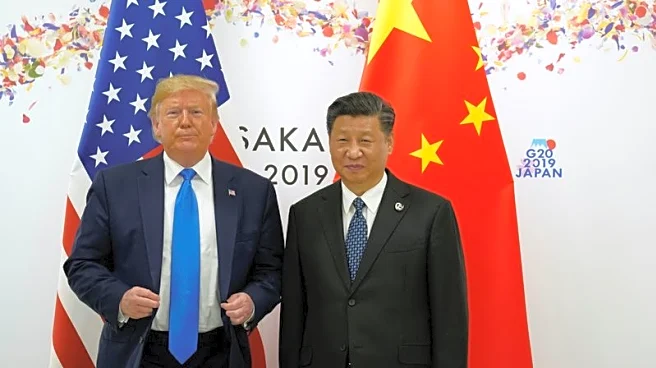What is the story about?
What's Happening?
President Trump is contemplating a significant aid package for U.S. farmers, potentially amounting to $10 billion or more, as the agricultural sector faces economic challenges due to his tariff policies. The aid, which could be funded through tariff revenues, is primarily aimed at supporting soybean producers and other parts of the farm economy. Discussions are ongoing, with no final decisions made yet. This move comes in response to the financial strain on farmers following the imposition of tariffs on China, which led to a sharp decline in Chinese imports of U.S. soybeans. The U.S. Agriculture Department has reported that soybean growers bore the brunt of the financial losses during the initial trade war. Treasury Secretary Scott Bessent indicated that an announcement regarding substantial support for farmers could be made as early as next week.
Why It's Important?
The proposed aid package is crucial for the U.S. agricultural sector, which has been significantly impacted by the trade tensions with China. Soybean farmers, in particular, have faced severe financial difficulties due to the reduction in Chinese purchases. The aid could provide much-needed relief and help stabilize the farm economy. Additionally, the move underscores the administration's strategy to use tariff revenues to mitigate the adverse effects of its trade policies. The outcome of these discussions could influence the broader U.S.-China trade relations and impact future negotiations. Farmers stand to gain from this support, which could help them prepare for the next planting season and manage the current record harvest.
What's Next?
An official announcement regarding the aid package is expected soon, possibly by next week. The administration is also preparing for a potential breakthrough in U.S.-China trade talks, with President Trump set to discuss soybean trade with Chinese President Xi Jinping at an upcoming meeting in South Korea. The outcome of these discussions could lead to changes in the current trade dynamics and provide further clarity on the future of U.S. agricultural exports to China.
AI Generated Content
Do you find this article useful?















